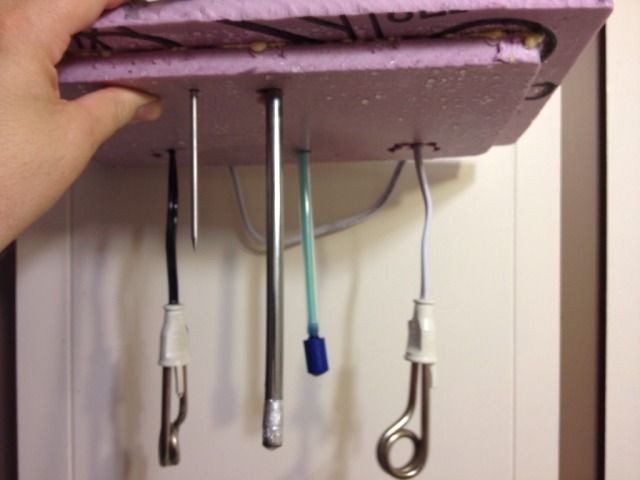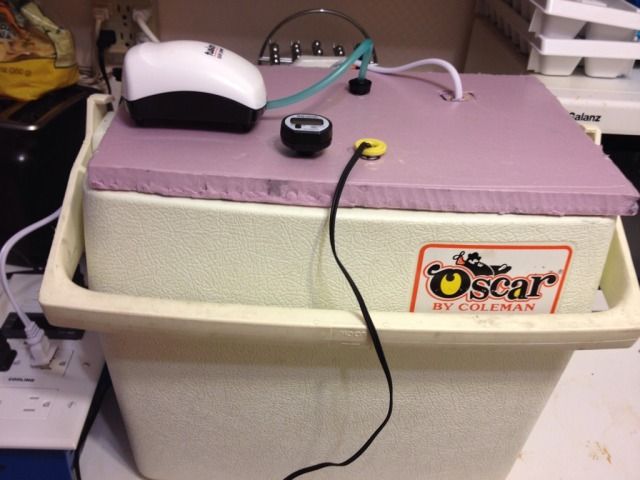Here is an example of a 2 element 30 liter kettle...
https://hrafnkell.wordpress.com/2011/03/27/diy-plastic-boil-kettle/
https://hrafnkell.wordpress.com/2011/03/27/diy-plastic-boil-kettle/

Basically, a 120v 15 amp circuit has the potential for 1800 watts. 120*15. Rule of thumb is to keep it around 80% of max or 1440 watts. That being said, 1500 watts on a 15 amp circuit would be okay. If you had 12 gauge wire, you could run a 20 amp circuit and get up to 2400 watts or 1920 watts using the 80% rule. I would be hesitant to run a 20 amp breaker over 14 gauge wire as the wire can get pretty hot.
volts and watts are not what you need to be worried about. Its the amp draw that is what will hurt or (highly unlikely with this type of stuff) kill you. Most household electronics just don't have the amp draw to stop your heart. Unless you are brewing in the tub. Only time i get antsy around power is when im working on air conditioning condensers. When running, they draw around 15-20 amps constant, and on start up, pull 20-30 amps, 220v. I have seen big guys get hit by those wires and get knocked back, and knocked out.
Agreed. 120V you won't be happy but it won't kill you. 220V is a different story.
This is simply not accurate.
And this brings up another reason to avoid plastic buckets with electric elements. You need to ensure the elements are grounding properly. Stainless kettles that are grounded provide immediate paths to ground and will trip GFIs immediately. Plastic buckets could potentially allow for an energized liquid volume, which could easily kill someone who is a conduit to earth ground if they made appropriate contact. Again, can does not equal should.
Here is an example of a 2 element 30 liter kettle...
https://hrafnkell.wordpress.com/2011/03/27/diy-plastic-boil-kettle/
Yes, I suppose. The elements should cover the ground issue, but these are being repurposed, so there is certainly no guarantee they will do their job and protect you. I certainly hope those choosing to use a plastic bucket with electric elements don't skimp further and skip an upstream GFI. That would be Darwinism in waiting.
And even he mentions the armchair wankers who just refuse to get their heads around the fact that just because THEY in their all knowing "wisdom" have never heard of something that LOTS of people around the world are already doing, that maybe they need to STFU about it instead of insisting it won't work.
Reminds me of the very first NO-Chill brewing thread on here, all the "quarterbacks" ignoring the fact that the Aussies have been doing it for 20 or more years and had perfected it long before John Palmer went there, saw what they were doing and wrote about it for BYO... all those folks just so POSITIVE that everyone who was going to do it was going to make Botulism beer. And just refusing to let it go, even when actual Australian brewers were pointing out to them that they'd been doing it forever.
So funny how closed minded some people are...I get excited when I learn how different people and different cultures approach the same issues. Especially when I find out how common that actually may be. Just because I was ignorant of it, doesn't make it wrong, it just means I have more cool crap to learn and to try.
Aside from the practical electrical and safety issues here why doesn't an electrical element placed directly IN the wort (or the mash) not burn the wort rather than boil it?
I shutter to think or how many electric home brewers "Havent gotten around to" installing gfci protection yet... Sadly I believe theres a lot of them here that just dont think its worth their lives because they believe they can prevent any accident where it would save them...
Does a gfi power bar do the trick?
I shutter to think or how many electric home brewers "Havent gotten around to" installing gfci protection yet... Sadly I believe theres a lot of them here that just dont think its worth their lives because they believe they can prevent any accident where it would save them...

This would be a cool experiment. Any idea where a 33 liter bucket might be purchased in the US?
And even he mentions the armchair wankers who just refuse to get their heads around the fact that just because THEY in their all knowing "wisdom" have never heard of something that LOTS of people around the world are already doing, that maybe they need to STFU about it instead of insisting it won't work.
Reminds me of the very first NO-Chill brewing thread on here, all the "quarterbacks" ignoring the fact that the Aussies have been doing it for 20 or more years and had perfected it long before John Palmer went there, saw what they were doing and wrote about it for BYO... all those folks just so POSITIVE that everyone who was going to do it was going to make Botulism beer. And just refusing to let it go, even when actual Australian brewers were pointing out to them that they'd been doing it forever.
So funny how closed minded some people are...I get excited when I learn how different people and different cultures approach the same issues. Especially when I find out how common that actually may be. Just because I was ignorant of it, doesn't make it wrong, it just means I have more cool crap to learn and to try.
This is simply not accurate.
2 of these would likely boil 6 gallons...lol. Can't get any cheaper lol. On 2 separate GFI circuits for safety sake...
http://www.ebay.com/itm/Travel-Coff...936577?hash=item2c9ac18c01:g:sg4AAOSwgQ9Vku5I
Very ghetto, but I would prefer brewing in my basement with these over brewing outside in foul winter weather with propane....jmo.
2 of these would likely boil 6 gallons...lol. Can't get any cheaper lol. On 2 separate GFI circuits for safety sake...
http://www.ebay.com/itm/Travel-Coff...936577?hash=item2c9ac18c01:g:sg4AAOSwgQ9Vku5I
Very ghetto, but I would prefer brewing in my basement with these over brewing outside in foul winter weather with propane....jmo.


It's safe if you have water/wort in it when you turn it on... I'm looking at building one as we speak. Going to strip the elements out of a couple of K-Mart 10 dollar tea kettles, use and 8-10 gallon HDPE bucket (possibly a Rubbermqde Brute 10 gallon white container depending on how rigid it is) and control it with probably with an STC-1000, or maybe a PI depending on how fancy I want to get with the controller side of things.
I'm primarily looking for something to boil indoor in the winter.
My goal is to keep this below $100 bucks, and still "trick it out," with a ball valve, diptube, thermowell, sightglass and some sort of mesh hop spider or basket to keep the hops out of the wort when I drain. I'm also toying with the idea of having an integrated wort chiller mounted in it too.
Turkey fryers aren't as common in Australia, The UK, and I guess even Canada, and evidently a lot of brewers rig plastic bucket E-systems up, so a lot of the research into the safety, and a lot of problem solving is found on their sites and youtube channels. They're ahead of the game on this in those places. Just like the Aussies were with BIAB and No-Chill Brewing, which we only heard of after John Palmer went to Australia and wrote about it for BYO magazine a few years ago (which people bashed on here for the longest time, and now is widely embraced.)
https://www.youtube.com/watch?v=JwyWr6F9Dpc
Gash Slugg (Gavin Ellicott) on the Homebrew Network Facebook Page has a great vid on how to strip the elements out of the cheap tea kettles.
https://www.youtube.com/watch?v=zLAcxHTvu4U
The only thing that would concern me with these is if its just the tip that heats up thats going to be a very very high watt density surface (about twice that of the short HWD 120v 1500w water heater elements).. I have seen a thread somewhere here where a person used a short non foldover 120v 1500w element like this length in a rims and the result looked like something that was sitting in the bottom of my gas grill after a year... And that was with good flow across it.. with the tight space between the coils it sure to scorch unless the coils are stretched out ... Id use them for the HLT though. Just not for wort like I believe you suggested in the other thread.
Has anyone used one of these successfully that you know?
How would you mount them? the reason I'm considering stripping down a couple of the tea kettles is that they have everything you need, including the gasket to just drill a hole and mount them...]
I believe they are not mounted, but just hung over the kettle rim.
2 of these would likely boil 6 gallons...lol. Can't get any cheaper lol. On 2 separate GFI circuits for safety sake...
http://www.ebay.com/itm/Travel-Coff...936577?hash=item2c9ac18c01:g:sg4AAOSwgQ9Vku5I
Very ghetto, but I would prefer brewing in my basement with these over brewing outside in foul winter weather with propane....jmo.
I've used one of these along with my stovetop for 5.5/6 gallon batches the last few times. I haven't had any scorching problems. I use a cheap Home Depot spring clamp to hold it to the side of the kettle.
Wondering if anyone has made any progress and real world testing on this. My goal is to setup a semi biab style system that would allow me to make 3 gallon brews easier during the week days.
Wondering if anyone has made any progress and real world testing on this. My goal is to setup a semi biab style system that would allow me to make 3 gallon brews easier during the week days.
sunday I brewed 5.5 gals in a 8 gal fermentation bucket with a 4500 watt hot rod and had no issues with damage to the bucket. The cool thing is I used the same bucket to ferment in, no transfer necessary. I did a test boil with water to see if off flavors could be tasted and am happy to say none were detected.
The bucket was hdpe and was rated for 190f but with much research I saw no evidence to believe boiling in hdpe would leach anything into the wort. Can't wait for this one to ferment out for my first sample.
For what it's worth I've transferred boiling wort directly into a plastic bucket, and no chilled it. When it reached pitching temp I pitched, it tasted fine. Done it with several batches when I had problems with my wort chiller and hoses.
So, I just boiled 6 gallons of water in my 7.9 gallon fermenting bucket (to help eliminate a possible infection). I used a 2kW Hot Rod as the heat source.
From 140F tap water to boil took about 45 minutes, the last 15 wrapped in a moving blanket. I got a reasonable boil with the bucket lid half to three quarters on. All this in a 58 degree basement.
I should try doing hot tap next time I do this. Trying it with a 1500 heat stick as my main heat source. I'm looking to upgrade to a 5500w heatstick for my 10 gallon pot, but it heated nicely with the 1500 watt.
Hot tap water isn't a good idea for brewing with (water heaters tend to concentrate minerals in odd ways, and you can get off tastes in the water), but it's good as a test for raising from mash run-off temperatures to boiling.
Enter your email address to join: